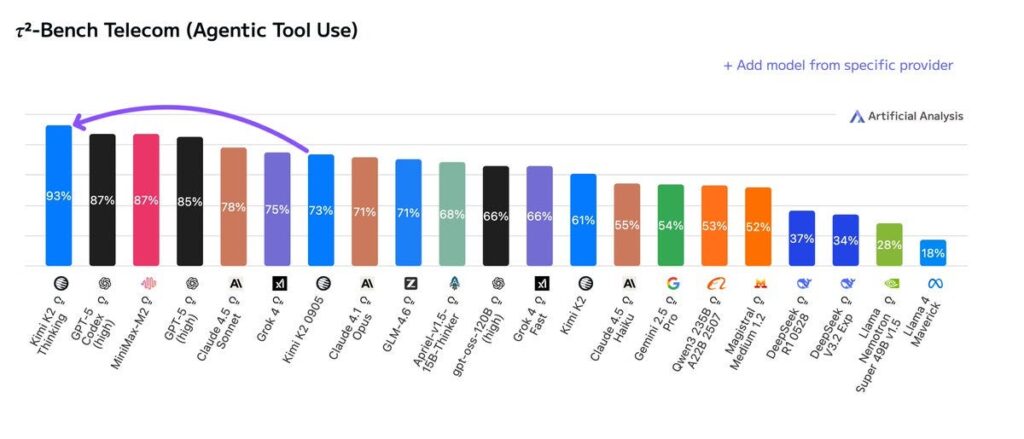The Pope is a remarkably wise and helpful man. He offered us some wisdom.
Yes, he is generally playing on easy mode by saying straightforwardly true things, but that’s meeting the world where it is. You have to start somewhere.
Some rejected his teachings.
Two thousand years after Jesus famously got nailed to a cross for suggesting we all be nice to each other for a change, Pope Leo XIV issues a similarly wise suggestion.
Pope Leo XIV: Technological innovation can be a form of participation in the divine act of creation. It carries an ethical and spiritual weight, for every design choice expresses a vision of humanity. The Church therefore calls all builders of #AI to cultivate moral discernment as a fundamental part of their work—to develop systems that reflect justice, solidarity, and a genuine reverence for life.
The world needs honest and courageous entrepreneurs and communicators who care for the common good. We sometimes hear the saying: “Business is business!” In reality, it is not so. No one is absorbed by an organization to the point of becoming a mere cog or a simple function. Nor can there be true humanism without a critical sense, without the courage to ask questions: “Where are we going? For whom and for what are we working? How are we making the world a better place?”
Pope Leo XIV (offered later, not part of the discussion in the rest of the post): Technological development has brought, and continues to bring, significant benefits to humanity. In order to ensure true progress, it is imperative that human dignity and the common good remain resolute priorities for all, both individuals and public entities. We must never forget the “ontological dignity that belongs to the person as such simply because he or she exists and is willed, created, and loved by God” (Dignitas Infinita, 7).
Roon: Pope Leo I think you would enjoy my account.
Liv Boeree: Well said. Also, it’s telling to observe which technologists (there’s one in particular) who just openly mocked you in the quote tweets for saying this.
Grimes: This is so incredibly lit. This is one of the most important things ever said.
Pliny the Liberator:
Rohit: Quite cool that amongst the world leaders it’s the Pope that has the best take on dealing with AI.
The one in particular who had an issue with the Pope’s statement is exactly the one you would guess: Marc Andreessen.
For those who aren’t aware of the image, my understanding of the image below, its context and its intended meaning is it is a selected-to-be-maximally-unflattering picture of GQ features director Katherine Stoeffel, from her interview of Sydney Sweeney, to contrast with Sydney Sweeney looking in command and hot.
During the otherwise very friendly interview, Stoeffel asked Sweeney a few times in earnest fashion about concerns and responses around her ad for jeans, presumably showing such ilk that she is woke, and Sweeney notes that she disregards internet talk, doesn’t check for it and doesn’t let it get to her, and otherwise dodged artfully at one point in particular, really excellent response all around, thus proving to such ilk she is based.
Also potentially important context I haven’t seen mentioned before: Katherine Stoeffel reads to me in this interview as having autistic mannerisms. Once you see the meme in this light you simply cannot unsee it or think it’s not central to what’s happening here, and it makes the whole thing another level of not okay and I’m betting other people saw this too and are similarly pissed off about it.
Not cool. Like, seriously, don’t use this half of the meme.
It’s not directly related, but if you do watch the interview, notice how much Sydney actually pauses to think about her answers, watch her eye movements and willingness to allow silence, and also take her advice and leave your phone at home. This also means that in the questions where Sydney doesn’t pause to think, it hits different. She’s being strategic but also credibly communicating. The answer everyone remembers, in context, is thus even more clearly something she had prepped and gamed out.
Here for reference is the other half of the meme, from the interview:
Daniel Eth: Andreessen is so dogmatically against working on decreasing risks from AI that he’s now mocking the pope for saying tech innovation “carries an ethical and spiritual weight” and that AI builders should “cultivate moral discernment as a fundamental part of their work”
Daniel Eth (rest of block quote is him):
The pope: “you should probably be a good person”
Marc Andreessen (as imagined by Daniel Eth): “this is an attack on me and everything I stand for”
Yes, I do think ‘you should probably be a good person’ in the context of a Pope is indeed against everything that Marc Andreessen stands for, straight up.
Is that an ‘uncharitable’ take? Yes, but I am confident it is an accurate one, and no this type of systematic mockery, performative cruelty, vice signaling and attempted cyberbullying does not come out of some sort of legitimate general welfare concern.
Marc Andreessen centrally has a strong position on cultivating moral discernment.
Which is the same as his position on not mocking those who support morality or moral discernment.
Which is that he is, in the strongest possible terms, against these things.
Near: we’re in the performative cruelty phase of silicon valley now
if we get an admin change in 2028 and tech is regulated to a halt b/c the american people hate us well this would not surprise me at all tbh. hence the superpacs i suppose.
pmarca deleted all the tweets now, the pope reigns victorious once again.
Roon: this is actually the end stage of what @nearcyan is describing, an age dominated by vice signaling, a nihilistic rw voice that says well someone gave me an annoying moral lecture in the past, so actually virtue is obsolete now.
bring back virtue signaling. the alternative is worse. at least pretend you are saving the world
near: first time ive ever seen him delete an entire page of tweets.
Daniel Eth: Tbf Andreessen is a lot more cruel than the typical person in SV
Scott Alexander: List of Catholic miracles that make me question my atheism:
-
Sun miracle of Fatima
-
Joan of Arc
-
Pope making Marc Andreessen shut up for one day.
Yosarian: It’s also amazing that Marc got into a fight with the Pope only a few weeks after you proved he’s the Antichrist
Scott Alexander: You have seen and believed; blessed are those who believed without seeing.
It turns out that yes, you can go too far around these parts of Twitter.
TBPN (from a 2 min clip discussing mundane AI dangers): John: I don’t think you should just throw “decel” at someone who’s identifying a negative externality of a new technology. That’s not necessarily decelerationist.
Dean Ball: It’s heartening to see such eminently reasonable takes making their way into prominent, pro-tech new media.
There is something very “old man” about the terms of AI policy debates, and perhaps this is because it is has been largely old people who have set them.
When I hear certain arguments about how we need to “let the innovators innovate” and thus cannot bear the thought of resolving negative externalities from new technology, it just sounds retro to me. Like an old man dimly remembering things he believes Milton Friedman once said.
Whereas anyone with enough neuroplasticity remaining to internalize a concept as alien as “AGI” can easily see that such simple frames do not work.
It is as heartening to see pro-tech new media say this out loud as it is disheartening to realize that it needed to be said out loud.
A reasonable number of people finally turned on Marc for this.
Spor: I kinda can’t believe all it took was a bad meme swipe against the Pope for legit all of tech Twitter to turn against Marc Andreessen
There’s a lesson in there somewhere
To be fair, most of it came from his response, at least I think
If he doesn’t go around unfollowing and blocking everybody and deleting tweets, it’s a nothingburger
Daniel Eth: I think the thing is everyone already hated Andreessen, and it’s just that before a critical mass of dissent appeared people in tech were scared of criticizing him. And this event just happened to break that threshold
Feels like the dam has broken on people in the tech community airing grievances with Andreessen. Honestly makes me feel better about the direction of the tech community writ large
Matthew Griisser: You come at the King, you best not miss.
Jeremiah Johnson considers Marc Andreessen as an avatar for societal delay as he goes over the events discussed in this section.
Jeremiah Johnson: Now, I don’t want to say that Marc Andreessen is single-handedly causing the collapse of society. That would be a slight exaggeration. But I do believe this one incident shows that Andreessen is at the nexus of all the ways society is decaying. He’s not responsible. He’s just representative. He’s the mascot of decay, the guy who’s always there when the negative trends accelerate, cheering them on and pushing things downhill faster.
I mean, yeah, fair. That’s distinct from his ‘get everyone killed by ASI’ crusades, but the same person doing both is not a coincidence.
And no, he doesn’t make up for this with the quality of his technical takes, as Roon says he has been consistently wrong about generative AI.
As a reminder, here is Dwarkesh Patel’s excellent refutation to Marc Andreessen’s ‘why AI will save the world, its name calling and its many nonsensical arguments. Liron Shapira has a less measured thread that also points out many rather terrible arguments that were made and then doubled down upon and repeated.
Daniel Eth: This whole Andreessen thing is a good reminder that you shouldn’t confuse vice with competence. Just because the guy is rude & subversive does not mean that he has intelligent things to say.
Marc’s position really has reliably been, as explicitly stated as the central thesis of The Techno-Optimist Manifesto, that technological advancement is always universally good and anyone who points to any downside is explicitly his ‘enemy.’
There were a few defenders, and their defenses… did not make things better.
Dan Elton: I’m a bit dismayed to see @pmarca bowing to anti free speech political correctness culture and deleting a bunch of funny light hearted tweets. The pope is so overrated. If we can’t make a joke about the pope, is there anything left we are allowed to laugh at?
That is very much not what happened here, sir. Nor was it about joking about the pope. This was in no way about ‘free speech,’ or about lighthearted joking, it was about being performatively mean and hostile to the very idea of responsibility, earnestness or goodness, even in the theoretical. And it was about the systematic, intentional conflation of hostility with such supposed joking.
(Perhaps the deleted AI video of the pope was funny? I don’t know, didn’t see it.)
Marc nuked several full days of posts in response to all this, which seems wise. It’s a good way to not have to make a statement about exactly what you’re deleting, plays it safe, resets the board.
Mike Solana: my sense is the number of people who 1) furiously defended the pope last night and then 2) went to mass this morning is probably close to zero. status games.
Joe Weisenthal: Got em.
Very obviously: We’re supporting the Pope here because he took the trust and power and yes holiness vested in him and spoke earnestly, wisely and with moral clarity, saying obviously true things, and we agree with him, and then he was mocked for it exactly because of all these things. Not because we’re Catholics.
There’s this mindset that you can’t possibly be actually standing up for ideas or principles or simply goodness. It must be some status game, or some political fight, or something. No, it isn’t.
Marc also went on an unfollow binge, including Bayes and Grimes, which is almost entirely symbolic since he (still) follows 27,700 people.
I feel good about highlighting his holiness the Pope’s wise message.
I feel bad about spending the bulk of an entire post pointing out that someone has consistently been acting as a straight up horrible person. Ideally one would never do this. But this is pretty important context within the politics of the AI space and also for anyone evaluating venture capital funding from various angles.
Remember, when people tell you who they are? Believe them.
So I wanted to ensure there was a reference for these events we can link back to, and also to remember that yes if you go sufficiently too far people eventually notice.




























